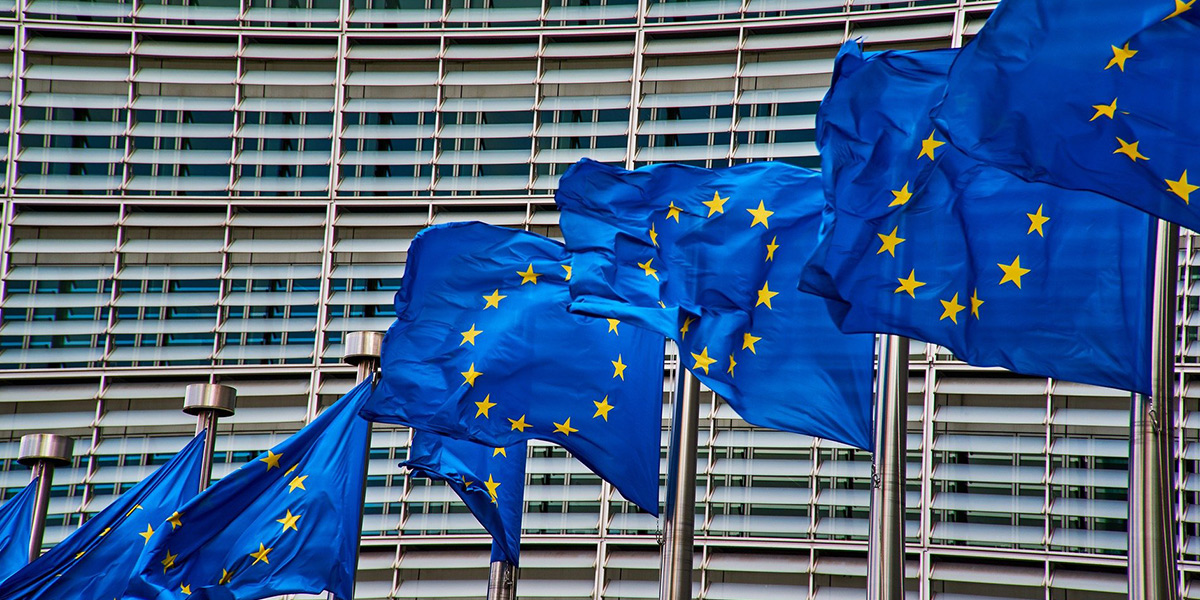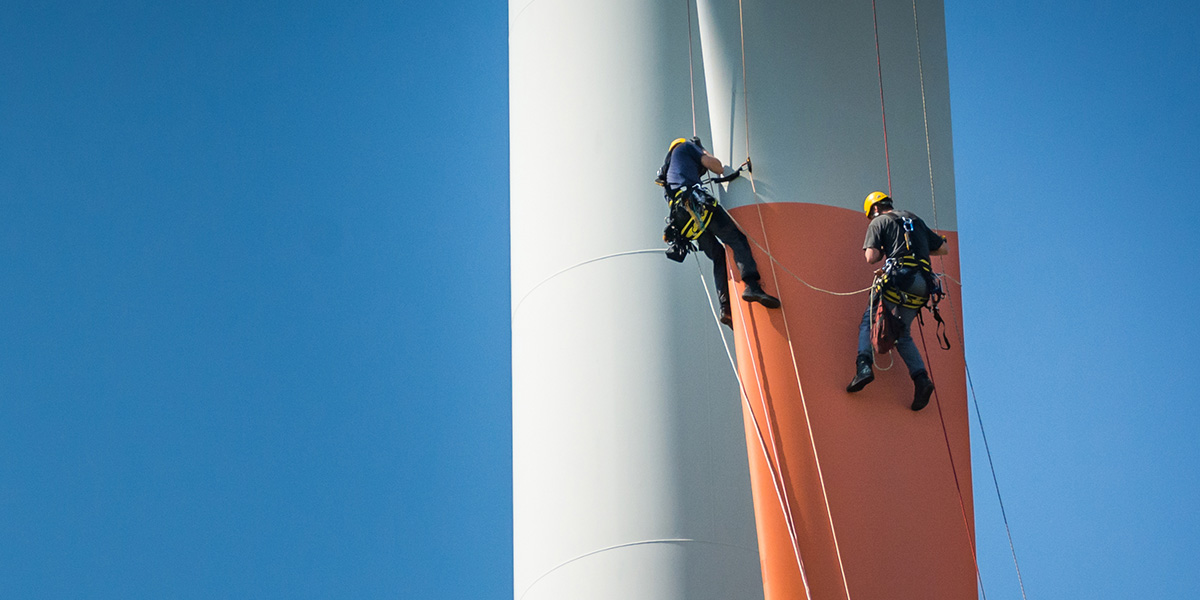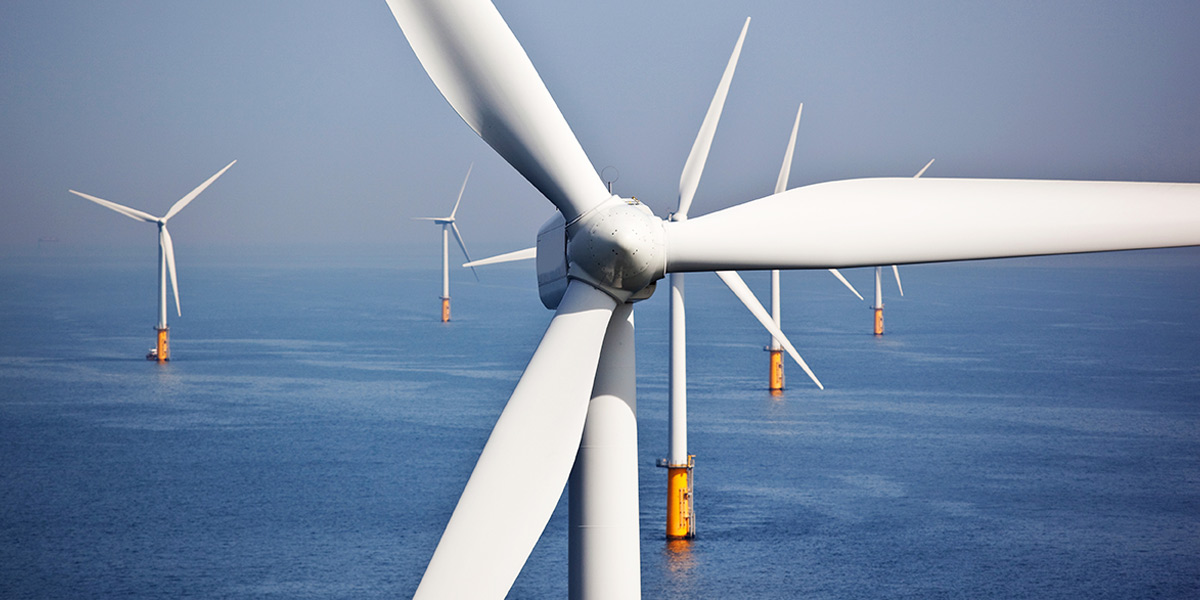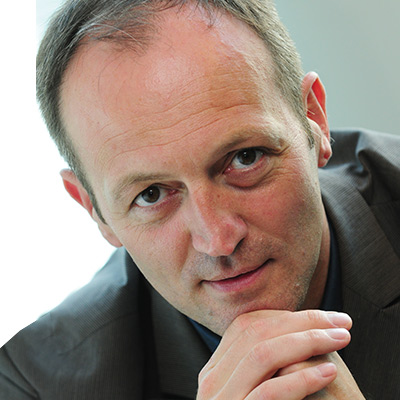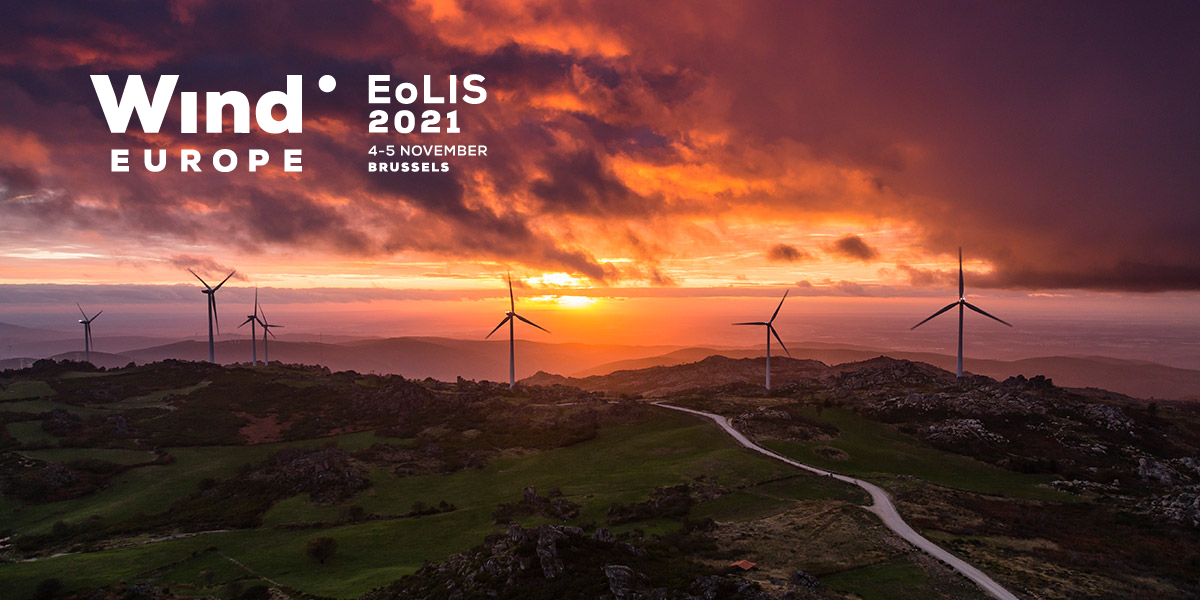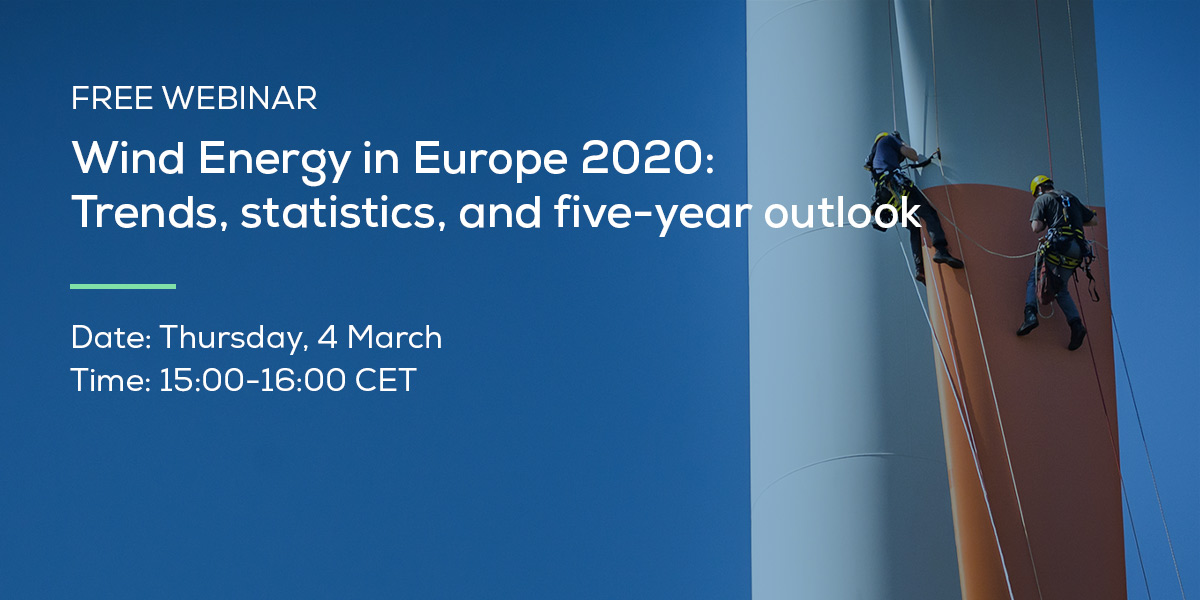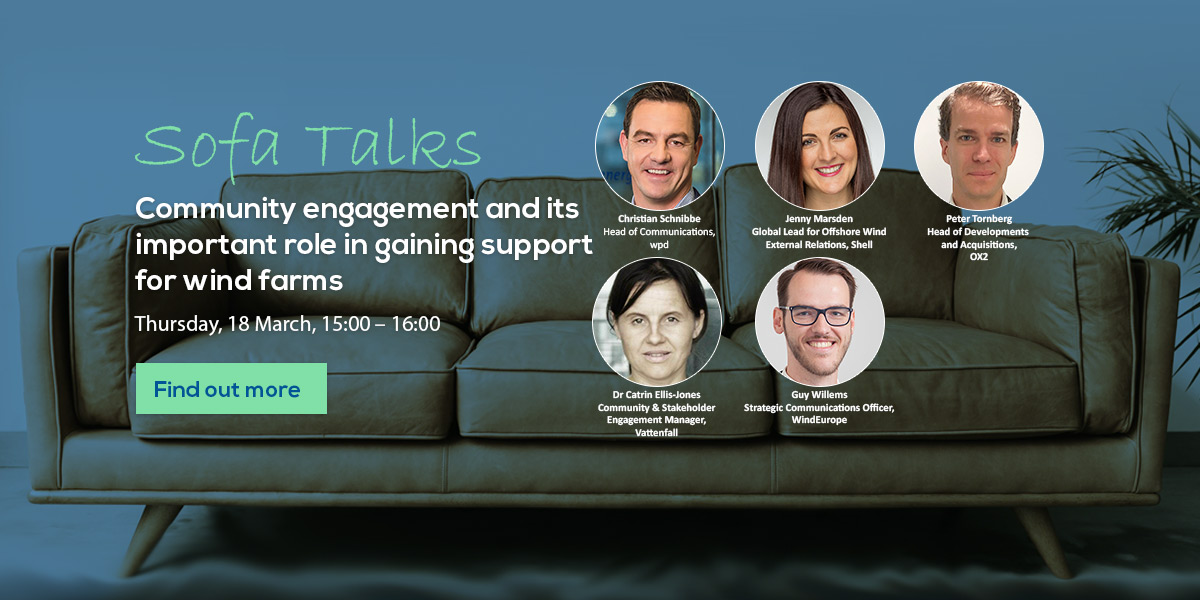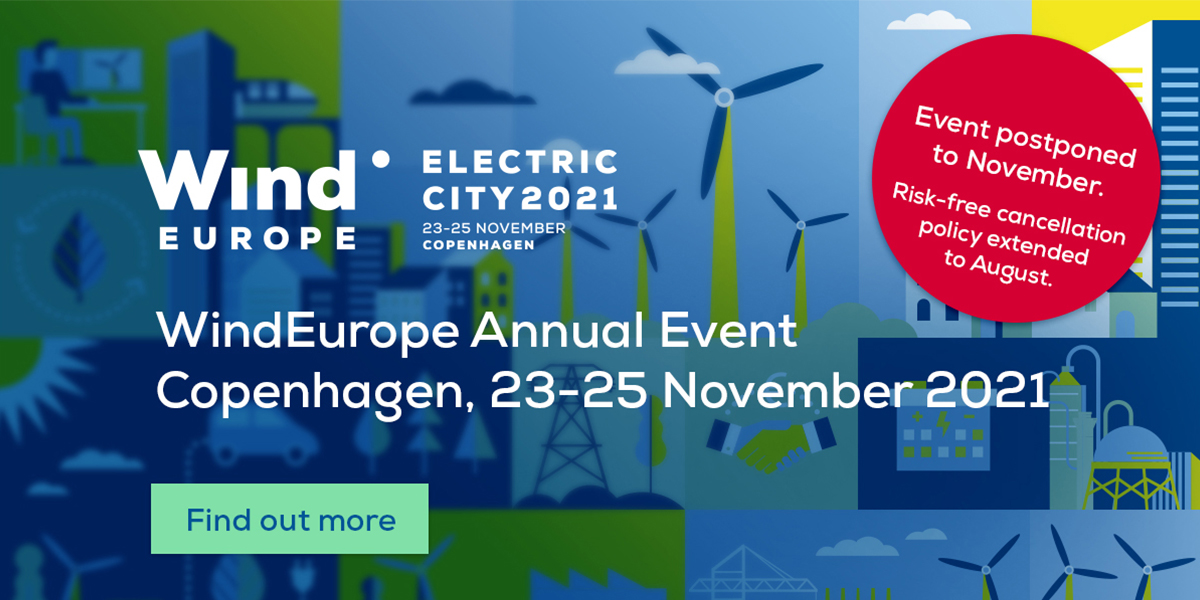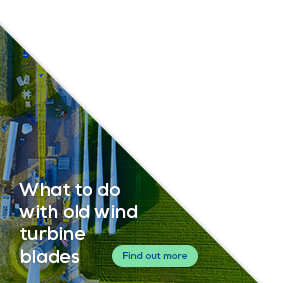WindEurope Bulletin
WindEurope Bulletin March 2021
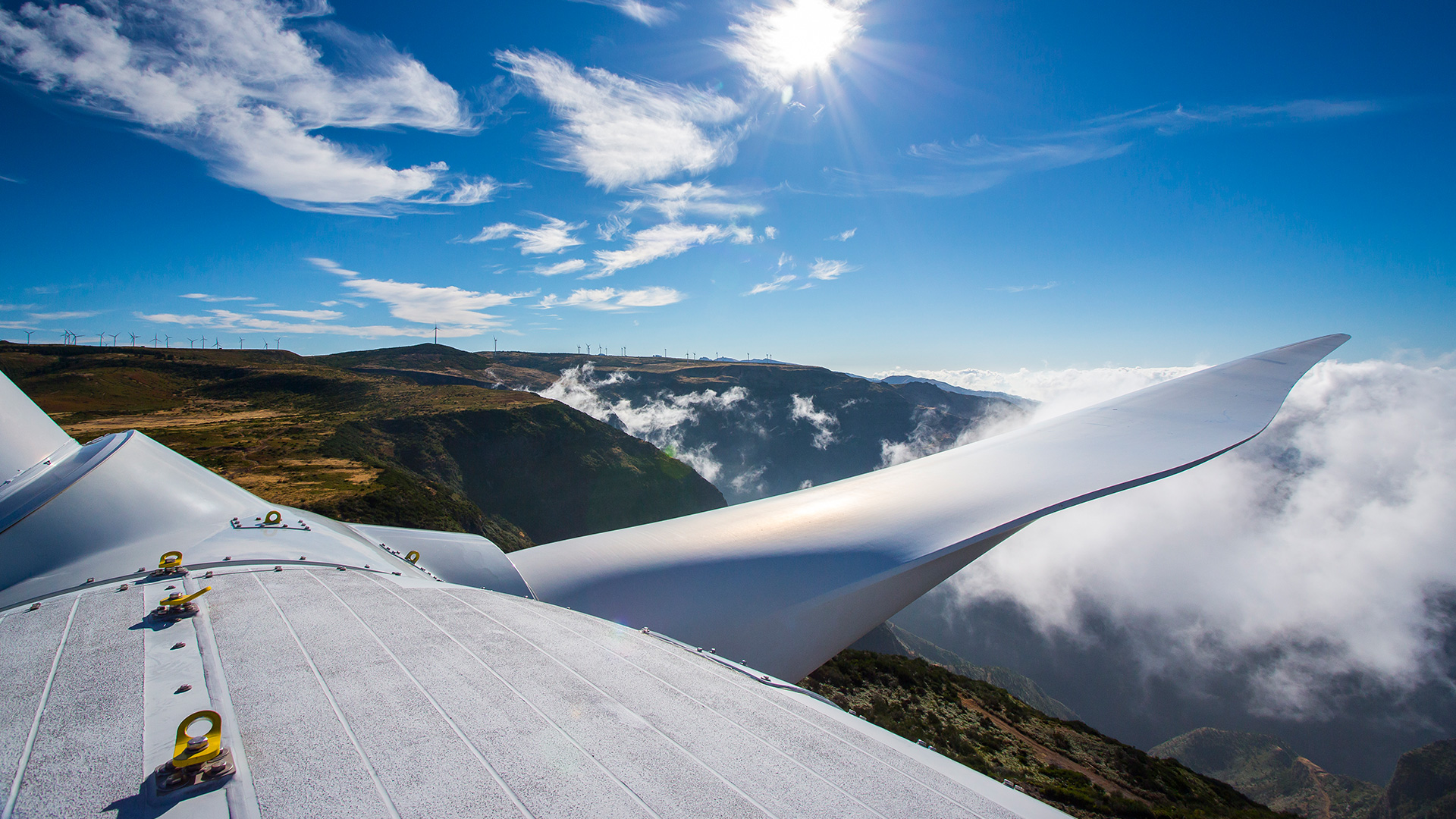
2 March 2021
CEO Foreword
Dear WindEurope Member,
Wind was 16% of Europe’s electricity in 2020 – 13% of that onshore; 3% offshore. Europe built 14.7 GW of new wind farms, 80% of which was onshore. The Netherlands built the most (mainly offshore) followed by Germany (mainly onshore, though much less than in previous years).
All this and much more data are available in the annual European wind energy statistics report which WindEurope published last week. The statistics also include our outlook for new installations in the next five years, 2021-25, as well as our expectations for decommissioning and repowering over the same period.
Our main message from all the data is that the EU is set to install 15 GW a year of new capacity over 2021-25. But it needs 18 GW a year to meet its current 32% renewable energy target for 2030 and 27 GW a year to meet the higher renewables target that’s coming with the new 55% climate target. So Europe needs to accelerate the build-out of wind to deliver the Green Deal.
We made it very clear in publishing this data that the main bottleneck is permitting. The rules and procedures are a considerable hindrance as well. And there aren’t enough staff in the different permitting authorities to process the applications. National Governments need to improve things. And the EU needs to lean harder on them to do so and show them how to simplify permitting.
When we published the data, the European steel and chemicals industries joined us in calling for a faster build-out of wind. They want more wind to help decarbonise their operations, whether it’s by electrifying them or powering them with renewable hydrogen. It is a major step that Europe’s leading energy-intensive industries are now calling for more wind too. They used to worry about the costs of wind and its impact on energy systems. Now they want more wind.
Other highlights from the data:
– In 2020, new installations were 19% lower than what we expected pre-COVID. COVID-related impacts were felt more in onshore than offshore wind installations;
– Seven countries in Europe now get more than 20% of their electricity from wind: Denmark (48%), Ireland (38%), Germany (27%), the UK (27%), and Portugal (25%) making up the five most reliant; and
– 388 MW of capacity were fully decommissioned across Europe in 2020. But the new repowered capacity totals only 345 MW, a net loss of 40 MW. Over 2021-25, Europe will have 38 GW capacity older than 20 years. We expect only 2.4 GW of that to be repowered (producing 4 GW new capacity) and 7 GW to be fully decommissioned – with the rest getting lifetime extension.
We are presenting all the data at a free webinar tomorrow, 4 March. Click here to register.
Separately, a big concern for us right now are the Recovery and Resilience Plans (RRPs) that EU Governments are preparing. These will set out how EU countries are going to spend their share of the EU’s €673bn post-COVID Recovery Plan. Member States have until 30 April to submit their individual plans. As an industry, we need to engage National Governments to ensure support for the right projects. 37% of overall funding will go to renewables, but we can ensure wind benefits through grants and loans supporting R&D, grid infrastructure, EV charging stations, ports, roads, and offshore scale-up, among others – see our infographic for more info.
In terms of events, thank you to those of you who submitted the 135 extracts we’ve received for our annual technical workshop on resource assessment and analysis of operating wind farms. Our WindEurope Technology Workshop will be going ahead on 9-10 September in Italy – more updates on this over the next few months.
Finally, we’ll be launching a survey soon to prepare our annual End-of-Life Issues and Strategies Seminar (EoLIS) which will take place on 4-5 November in Brussels. It’ll cover all the issues around repowering and lifetime extension. More details on the survey below.
I wish you an enjoyable read.
Kind regards,

Giles Dickson
Policy News
Launch of the Recovery and Resilience Facility (RRF)
The €673bn Recovery & Resilience Facility (RRF) regulation was published on 18 February 2021. It represents an unprecedented EU-level fiscal intervention to revive the European economy in the wake of the COVID-19 pandemic. Crucially, the objective of the RRF is not to see a return to business-as-usual but to lay the foundations for Europe’s future economy: greener, more digital, and more competitive.
This means direct funding and financing for infrastructure. For the wind industry, the key priorities are: grid infrastructure, ports and roads; research & innovation; and renewable hydrogen. And loans are guarantees to de-risk cutting-edge wind energy projects, to expand and modernise our manufacturing capacity, to support our exports, or to help de-risk corporate Power Purchase Agreements.
How can the wind energy sector make the most of RRF? Read our infographic here.
EU Member States have until 30 April to submit their national Recovery & Resilience Plans for review and approval by the European Commission. These plans will set out how Member States will use the funding and financing available under the RRF to support the transition towards a greener and more sustainability economy.
The RRF Regulation specifies that 37% of the €673bn is earmarked for climate-related spending. And it includes a list of investments that would qualify as such. The list not only defines climate-related spending but also applies a weighting for different forms of spending. Member States must take these weightings into account when drafting their Recovery and Resilience Plans.
When proposing the RRF, the European Commission made it clear that recovery funding must “Do No Harm” to the EU’s climate mitigation efforts. Now the Commission has published a technical guidance on how to apply this principle: measures which contribute to “significant greenhouse gas emissions” may not be funded under the RRF.
WindEurope Members can find all relevant information on the EU Recovery Plan in the Members Area here.
Monthly Advocacy Report
What policies are being cooked up in Brussels? How will they affect your business? What is the power play between the EU institutions? Who’s WindEurope speaking to when shaping policies? What have we been communicating as an industry to different stakeholders? How can I get involved in meetings?
For answers to these questions, look no further than WindEurope’s Advocacy Report. This is our monthly compilation of the latest intelligence from Brussels on all the topics we cover for the wind industry. Together with all the position papers and reports we’ve developed both with you and for you. And a recap of all the policymakers and stakeholders we’ve met to pass on our industry’s policy priorities.
Renewable Hydrogen Coalition Policy Charter: Making Europe the Global Leader in Renewable Hydrogen
The Renewable Hydrogen Coalition, launched in November 2020, has gained the support of some of the most innovative and ambitious businesses spanning the entire energy value chain. 3 March sees the release the Coalition’s Policy Charter to mainstream renewable hydrogen in Europe and to place the continent at the forefront of the global race for environmentally friendly solutions.
The coalition’s Policy Charter lays out the crucial policy foundations to enable the scaling up and market uptake of renewable hydrogen produced via electrolysis and renewable electricity.
Energy Commissioner Kadri Simson reacted to the news by saying “Renewable electricity and renewable hydrogen are key to achieving ambitious climate and energy goals. They offer a unique opportunity for Europe to stimulate green recovery, create jobs and become the global leader in clean energy technologies.”
The founders have emphasised that renewable hydrogen serves as the “missing link” in ensuring that sectors which cannot electrify are still able to decarbonise. This would mean a serious scale-up of electrolysers, alongside the general scale-up of wind across Europe – currently supplying 16% of electricity. A huge increase in the number of wind farms, supplying both renewable electricity and hydrogen, would enable Europe to become a global leader in renewable hydrogen.
The Renewable Hydrogen Coalition hopes to bring together all like-minded innovative businesses committed to achieving climate neutrality, from energy and technology providers, startups, entrepreneurs to off-takers in relevant end-use sectors. Through co-signing its Policy Charter and joining the coalition, they all seek to play a role in shaping Europe’s renewable hydrogen industry going forward.
Business Intelligence News
WindEurope: 2020 General Statistics Report
This report summarises new installations and financing in Europe’s wind farms from 1 January to 31 December 2020. It also analyses how European markets will develop in the next five years (2021 to 2025). The outlook is based on WindEurope internal analysis and consultation with its members.
Update – National Policy and Regulatory Developments in 2020
2020 saw widespread disruption across Europe – wind was certainly not immune. But we proved to be resilient and adaptable – while fossil-based output fell, we continued to operate and regained much of the ground lost later in the year.
In the meantime, the EU has reinforced its commitment to decarbonise, with ambitious new targets for wind energy – it now aims for a 55% reduction in greenhouse gas emissions by 2030 (up from 40%) and has pledged to deploy 300 GW of offshore wind by 2050. To make good on all this, however, Member States have a lot of ground to cover – particularly in terms of permitting.
This online summary looks at policy and regulatory developments in each Member State – and several non-EU countries – over the past year, and whether they help or hinder wind energy deployment. The new format allows us to add new features: a support mechanism overview and key indicators for each country such as statistics and the five-year outlook.
We wish you an enjoyable read and look forward to receiving your feedback.
Please send any comments or questions to [email protected].
Members News & Successes
Hempel – Cutting edge technology
A lick of paint goes a long way
Wind energy has been on a growth path for several decades and huge strides have been made in technology and innovation to make it one of the leading sources of renewable energy. From the outset, worldwide coatings manufacturer Hempel has been a part of this success and fully understands the need for asset owners to reduce their overall levelised cost of energy (LCoE). Until recently, Hempel has focused primarily on coating solutions for wind turbine towers. However following heavy investment in R&D, the company has been developing innovative solutions specifically formulated for wind turbine blades, including leading edge protection (LEP).
Why is leading edge protection important?
The leading edge is the part of the blade which is exposed to the most severe erosion conditions and this requires specific protective solutions to optimise blade performance and minimise damage. The blade leading edge erodes as it is continuously being pelted at high speeds by rain, snow and particulates in the air. Wind turbines, and consequently blades, are increasingly becoming larger in size. Staggeringly, there are turbines that operate blades as long as a football field (up to 100 m) and because of the length, the tip can reach speeds of over 300 km/h. A wind turbine’s performance is largely dependent on the aerodynamic properties of its blades and so it is vital that the right coating is applied to deliver optimum protection.
Maintenance is key
The reason that LEP is one of the industry’s biggest pain points is that while a wind turbine will remain in situ for up to 25 years with some parts requiring no maintenance at all, the leading edge may require repairs as often as every 1-3 years. A poor and eroding surface on the leading edge can mean loss of asset performance (less energy production), composite structural damage and wind turbine downtime.
Hempel understands these issues and the unavoidable costs it creates for windfarm owners and so has developed an LEP coating that is quick to apply in a wide range of environmental conditions (cold, warm and damp) and that offers a fast return to service. Hempel opened its own state-of-the-art on-site Rain Erosion Test facility in February 2019 to optimise its coating solutions for LEP. This facility simulates how the leading edge protection system reacts, for example, to variations in rain intensity, temperature, and raindrop sizes. As the only coatings manufacturer with its own dedicated test facility for leading edge erosion, Hempel has become a leader in LEP solutions as well as coating solutions for wind turbines. Hempel’s new LEP solution is currently being tested with customers and is on-track to be launched to the wider industry during 2021.
Wind Industry Success Stories 2020
We’ve been looking back at how our industry performed last year, and from all across the sector, we have seen examples of what we do best – working and operating under even the most difficult circumstances. We felt the impact of COVID-19, but we also faced the challenges head-on, and we stood our ground. We have a lot to be proud of.
We’ve been putting together a collection of success stories from across the European wind industry. If you have a story you’d like to showcase, be sure to get in touch with us by sending an email to [email protected].
Members interview
This month, we sat down with Dirk Soontjens and Thomas Baeker of Covestro to discuss their company’s role in supporting wind energy technology, the importance of the Circular Economy, and the European Green Deal. Mr. Soontjens is the External Representative for Covestro’s Polyurethanes Global Wind Segment and Mr. Baeker is Covestro’s Marketing Manager – Coatings, Adhesives and Specialties – Infrastructure.
Events
Survey: End-of-Life Issues & Strategies (EoLIS) Seminar 2021
Deadline: 5 March
The third edition of WindEurope’s End-of-Life Issues & Strategies (EoLIS) Seminar 2021 will take place on 4-5 November 2021 in Brussels, Belgium.
To make sure it reflects the priorities of the industry, we would like to get your input so that we can shape the event and tailor the programme to suit your needs.
Bearing in mind the ongoing COVID-19 situation, we are also keen to hear your feedback and expectations regarding travel during 2021.
It only takes 5 minutes to fill out this survey, which you can use to:
- indicate your company’s travel policy and how you think this might evolve;
- highlight topics you find important, and
- suggest possible speakers and features.
This information will be crucial in making this edition even better than last year. The deadline to submit is Friday 5 March. We look forward to your input!
Free webinar – Wind Energy in Europe 2020: Trends, statistics and the five-year outlook
When: 4 March, 15:00-16:00 CET
Speakers:
- Viktoriya Kerelska, Head of Advocacy and Messaging
- Daniel Fraile Montoro, Head of Market Intelligence
- Ivan Komušanac, Analyst – Markets & Wind Energy Technology
- Christoph Zipf, Press and Communications Manager
In this webinar, we will be taking a look at the developments and major shifts in Europe’s wind industry during the exceptional circumstances of 2020 and plotting its course over the next few years. Join our team of WindEurope analysts as they outline key installations in wind farms, supply chain activity, and investment trends. We will also be looking at the direct impact of the COVID-19 pandemic on the industry, and the outlook for wind in Europe over the next 5 years. This will be followed by a Q&A session for participants.
Sofa Talk: Community engagement and its important role in gaining public support for wind farms
When: 18 March, 15:00-16:00 CET
Building a wind farm can mean a big change for both urban and rural communities. However, it’s important to work with the local community from the start of the project to address concerns and outline the benefits of having a wind farm in their vicinity. Community support for wind projects across Europe is critical if we want to achieve our 2030 climate goals.
In this Sofa Talk we will discuss how community engagement affects public support for wind. How do wind energy developers involve communities during the planning and construction phases? And how do they continue to support the community throughout the lifetime of a wind farm after installation? We will be joined by both a local politician and representatives from the wind industry, providing insight into their experience of community engagement.
Reminder – WindEurope Electric City 2021 – Call for Abstracts
Deadline: 31 March
A brief reminder that our Electric City 2021 call for abstracts is open until 31 March.
Those who have already submitted proposals will be able to update them with any recent findings. We are also welcoming any new proposals on presentations that could be then featured as part of the conference programme. For any questions relating to the programme, contact [email protected].
Be sure to check out our conference page for more details and a list of topics.
Other news
WindEurope Instagram
Join our growing online community to learn new wind facts, discover new destinations, and connect with other fans of wind energy (now including over 2k followers)! Share your photos and tag us with @windeurope so we can see and like your posts!


